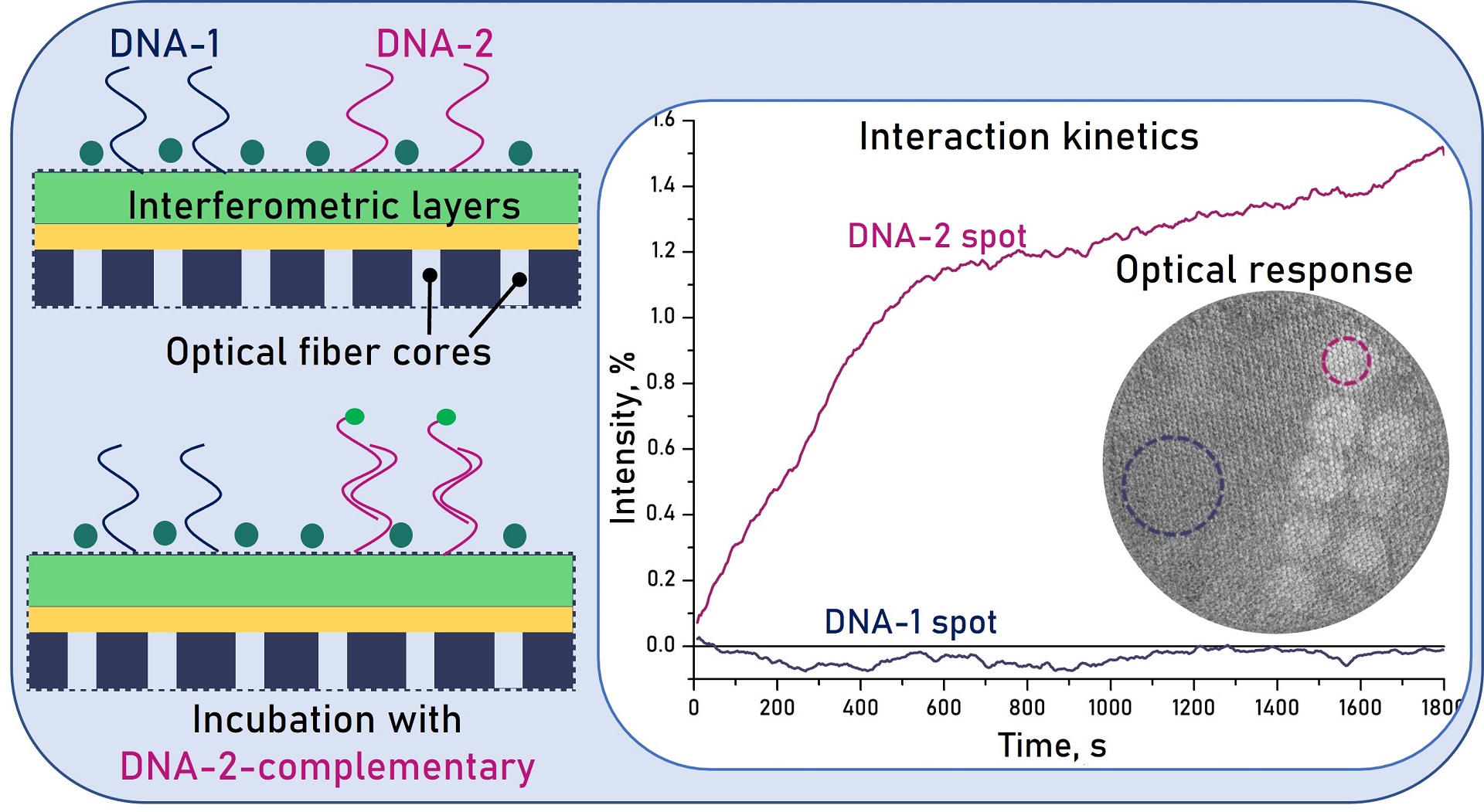To analyse injured biological tissue medicine uses biopsies but these procedures are invasive, painful and time-consuming. The researchers are aiming to replace biopsies by using optical fibers with remarkable optical properties, compactness and flexibility, which until now have only been used for
in vivo tissues imaging.
A
CEA-IRIG/SyMMES/Creab team has developed a biosensor based on functionalized optical fibers capable of detecting biological interactions remotely and in real time.
One of the main challenges is to be able to carry out several biological detections simultaneously. This is essential for
in vivo detection, in order to have the replicas and negative controls needed to overcome non-specific phenomena (adsorption, temperature changes). To achieve multiplexed detection, we
functionalized* the end of a rigid optical fiber assembly (diameter 1.6 mm) with two droplet arrays containing two different DNA strands.
Hybridization* of the complementary strand was followed at the other end, in real time, using the interference phenomenon. The 2nd DNA was used as a negative control. (cf.
figure).

Figure © CEA.
Left (top): schematic diagram of the functionalization of the end of the optical fiber assembly with strands DNA-1 and DNA-2.
Left (bottom): hybridization of DNA-2 with its complementary strand. Right: real-time monitoring of the signal in two spots: DNA-1 spot = negative control. DNA-2 spot = increase in signal due to hybridization with the complementary strand.
Photo: overview of the signal intensity after detection of the complementary strand (only the DNA-2 spots light up).
This proof of concept is a first step towards
in situ bio-detection. We now need to increase the multiplexing and sensitivity of smaller, flexible assemblies compatible with
in vivo applications.
Hybridization*: pairing that occurs when two DNA strands with complementary sequences meet.
Functionnalization*: grafting of molecules onto a surface to give it biodetection capabilities (= recognition of biological targets).
Fundings
- CNRS: interdisciplinary exploratory research program MITI
- Université Grenoble Alpes: exploratory research program IRS et IRGA.
- CEA : thèse PHARE
- Labex LANEF
- Labex ARCANE
- European project HoliFAB
- FEDER European Regional Funds and French Région Occitanie as part of the MultiFAB project
Collaboration
LAAS - Systems Analysis and Architecture Laboratory, Toulouse, France